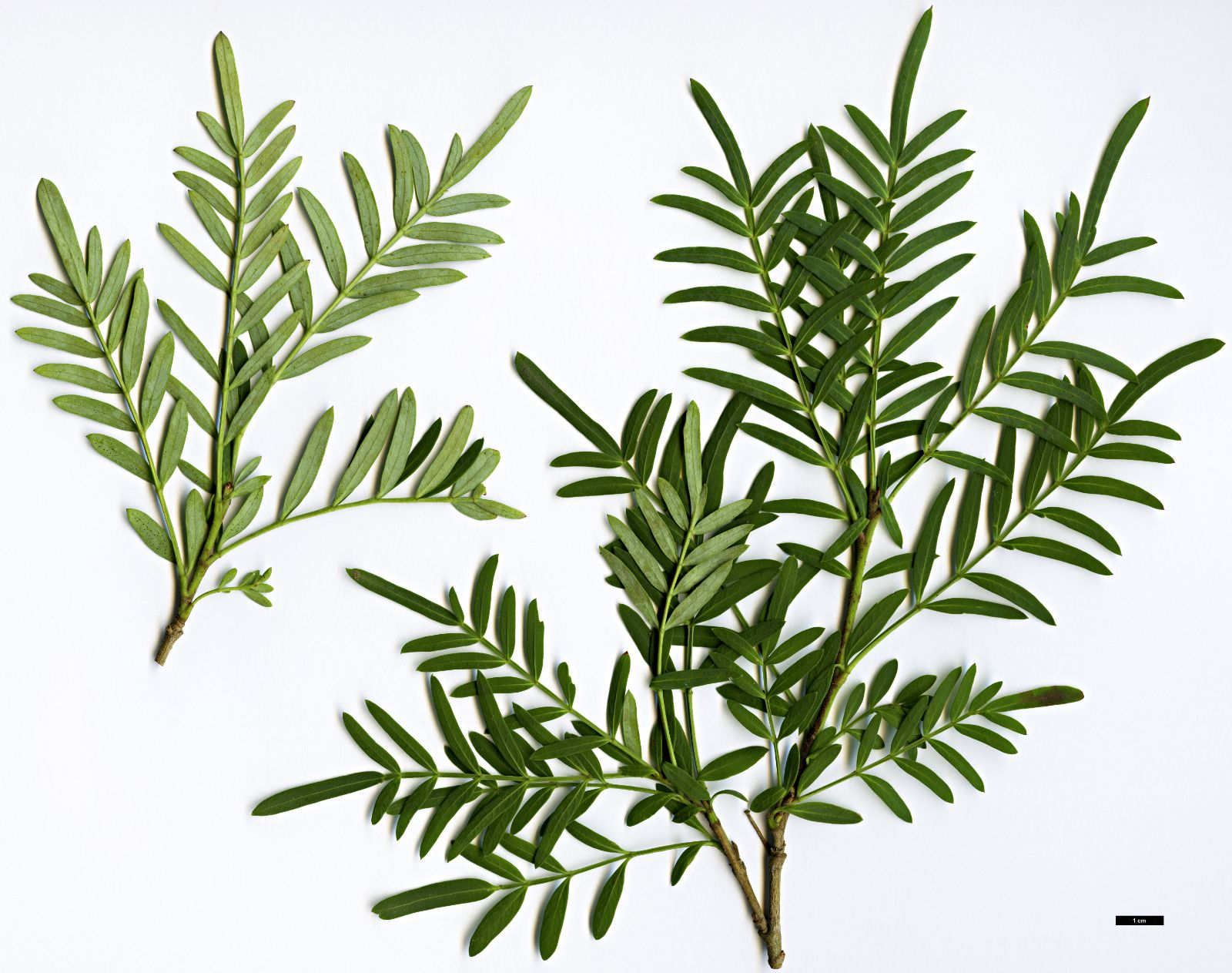Tieghemopanax
Credits
Article from Bean's Trees and Shrubs Hardy in the British Isles
Recommended citation
'Tieghemopanax' from the website Trees and Shrubs Online (treesandshrubsonline.
Family
- Araliaceae
A genus of trees and shrubs with about seven species in Australia (others in New Caledonia). Leaves pinnate, alternate. Flowers in umbels, arranged in the form of a panicle. Pedicels jointed. Petals four or five, valvate in the bud. Stamens four or five. Styles two, free almost to the base. Fruit a drupe.
The species treated below appeared in previous editions under the name Panax sambucifolium, but Panax, as now understood, consists entirely of herbs. The genus Tieghemopanax is closely allied to Polyscias, from which it was separated in 1905; it is not recognised by all authorities, and the species described appears in some works under the name Polyscias sambucifolius.

